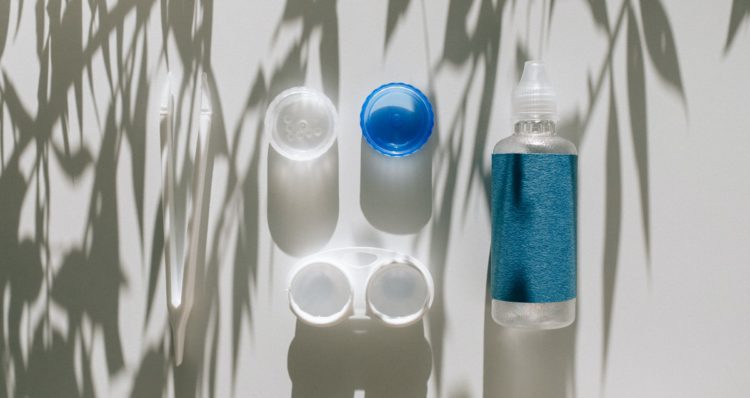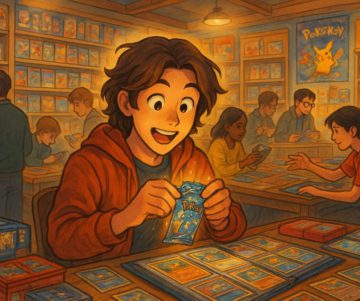
Surprising history of Contact Lenses
bianca | July 26, 2022 | 0 | My Blog
Opaque Tint Contact Lenses are Lenses that have a non-transparent tint and completely alter the color of your natural eyes. Color contacts allow individuals to extend this appearance flexibility into their eyes, making it possible to use colored contacts to alter their eye’s color and compliment their clothing, or create a natural improvement in their eye’s appearance. Today, a large range of color contact lenses are available in the market, catering for every taste, ranging from simple, no-power lenses that can alter your eye’s color with no prescription, to theatrical colored contacts, as well as colored contacts that can correct nearly every prescription.
The development of hard contact lenses and rigid gas permeable (RGP) contacts during the 1970s and 1980s quickly moved on to the introduction of handling color, which has an absorption rate of around 5%, to allow for more visibility when handling a lens, with no intention to alter the color of your eyes. The higher water content made the soft contacts extremely difficult to handle, and optical quality was worse compared with hard plastic lenses produced afterwards. New plastics made light lenses possible, and early contacts, as we know them today, were made in a way to fit into the shapes of our eyes. Plastic scleral lenses were light and comfortable and quickly replaced glass versions. Despite these great advances, the plastic scleral lens is still an all-frontal eyeglass, which is why it is only worn for a brief time.

The reason they were blocked was that plastic scleral lenses covered the eye surface in a barrier that was not designed to breathe. Because glass contacts covered the whole eye, they blocked the oxygen flowing into the cornea. That is, the early corneal lenses failed to let any oxygen get to the conjunctiva and cornea. The first successful contact lenses were made completely out of glass, thus not allowing oxygen to reach the eyes. The lack of oxygen meant that contact users with the glass contacts experienced extreme irritation in their eyes. Although manufacturing produced better-fitting lenses, eye irritation was still an issue. Glasses covers treated keratoconus, the progressive misalignment of the cornea. Cults proposed making glass shells, or lenses, that were designed to fit. In 1823, English astronomer Sir John Herschel proposed the idea of grinding glass contacts so that they would fit as close to the corneal surface as possible. Herschel suggested using a physical mould of an eye, allowing manufacturers to make lenses precisely fit every single wearer.
In 1887, German artificial-glass maker F. A. Mueller created the clear contact lens. These first contacts were not designed for correcting vision but proved to be effective at protecting ailing eyes.Further advances in lens construction meant that, early in the nineteenth century, contact lenses were starting to demonstrate their value in correcting vision. Since then, colorful contact lenses started making huge differences around the world for those who had eyesight problems, or those who preferred different colors of eyes. Although it was not comfortable, and could only be worn for hours at a time as early contacts were worn all over your eyes, it was a real breakthrough for contact lens technology. According to Londons Science Museum, this lens was worn across the whole eye and was only wearable for a few hours at a time. These lenses offered such superior oxygen permeation and comfort that eye doctors were allowed to prescribe them for prolonged use (overnight). Fick lenses were made of hand-blown glass, measuring 18-21mm across.
A year later, in 1888, German ophthalmologist Adolf Fick working on Mueller’s findings constructed and fitted the first contacts made of blown glass. William Feinbloom was the first to use plastics in contact lenses, creating the plastic scleral lens in 1936. With no risks of breaking the lens into your eyes, these new lightweight lenses revolutionized the industry and rendered glass lenses nearly completely obsolete. Further innovations came from Czech chemists Otto Wichterle and Drashoslav Lim, who invented breathable plastic materials, which led to soft lenses in the 1960s.
While contact lenses were a major advancement, they were still imperfect. Although many brands of contacts were slightly tinted to help make them easier to manage, makeup lenses worn to alter the colour of eyes were much rarer, accounting for just 3 per cent of contacts fitted in 2004. Some lenses use clear colorants to provide subtle enlargements of the patient’s natural eye color. With the right prescription for contacts and an adjustment by an eye doctor, you can safely change the color of your eyes with an amazing new color contact lens. Once you get a color contact prescription from your eye doctor, you can safely shop around for lenses that are FDA-approved. FDA-approved colored contacts are just disposable lenses that are colored. Circle lenses are cosmetic products for the eyes designed to make a wearer’s IRI appear larger, as well as play around with the colors in their eyes. The wearing of color contact lenses on Halloween has also been possible with these types of lenses. Circle lenses can provide a captivating appearance that adds gloss to the result. As impressive as the costumes of contact lenses can be at Halloween, the dyes used on these illicit contacts can cause oxygen less access to your eyes. The soft lenses are also molded, and different masks are applied, usually with lines that mimic iris patterns, then various colored dyes are introduced to create colored lenses that emulate a customer’s original eyes.







